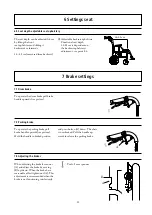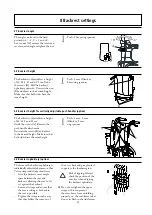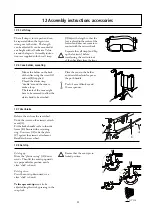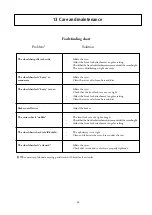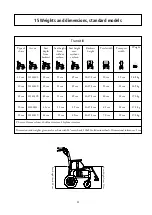
17
Parking: Increase the overall support
base of the wheelchair by reversing
for about 10 cm, thereby ensuring the
castor wheels swing forwards.
If the user is left alone in the
wheelchair, ensure that the brakes are
applied and that the anti-tip is swung
down.
If the chair is equipped with
height-adjustable push
handles, ensure that the
knobs are properly tightened.
This is especially important if
the chair is to be lifted with
the user sitting in it. Etac also
recommends fixed push
handles for everyday use on
stairs.
11 Driving technique, manoeuvring
11:1 General
11:2 Driving technique, kerbs and raised thresholds: up
Care giver, driving up forwards:
-
If anti-tips are used, turn
them upwards.
-
Tilt the wheelchair, with help
from the tilter, so that the
castor wheels come up onto
the pavement.
-
Lift by the push handles to
help the rear wheels up.
Care giver, driving up backwards:
-
Reverse the wheelchair up to
the kerb/threshold.
-
Tilt the wheelchair, if necessary
with the help of the tilter, so
that the castor wheels are in the
air.
-
Pull the wheelchair up and
backwards ensuring that the
castor wheels are over the edge
before setting down the
wheelchair on all 4 wheels.
-
If anti-tips are used, fold
them downwards.
11:3 Driving technique, kerb: down
Care giver, driving down forwards:
-
If anti-tips are used, fold
them upwards.
-
Tilt the wheelchair, if necessary
with the help of the tilter, so
that the castor wheels are in the
air.
-
Drive carefully down the kerb,
and set down the castor wheels
on the ground.
Care giver, driving down backwards:
-
Reverse the wheelchair up to
the edge of the kerb.
-
Reverse carefully down the
kerb, and continue backwards
on the rear wheels until the
castor wheels have cleared the
obstacle.
-
Set down the wheelchair once
again on all four wheels.
-
If anti-tips are used, fold
them downwards.










